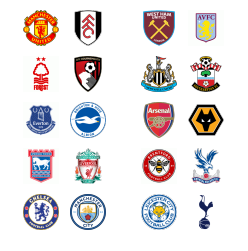From Radio Waves to LiveTV – Live Sports Streaming
When most people think about sports broadcasting, they picture high-definition TV screens or streaming apps on smartphones. However, the connection between technology and sports entertainment dates back to the days of radio broadcasts in the early 20th century. Back then, the only way to experience the thrill of a baseball game or a boxing match without attending in person was to gather around a radio set. Sports commentators had to paint an image with words, relying on creative descriptions to keep listeners engaged.
By the 1950s and 1960s, television began to replace radio as the main medium for experiencing big games. The novelty of actually seeing sports stars in action revolutionized how fans connected with their favorite teams and athletes. As color TV spread across the globe, sports leagues recognized the enormous potential of visual broadcasts to foster larger-than-life personalities and heroic narratives. Broadcasting rights became a critical revenue source, with leagues and networks forging lucrative deals that shaped the modern sports industry.
Fast forward to the internet era of the late 1990s and early 2000s. Early streaming was often choppy and prone to buffering, but it hinted at a future where fans could watch sports without traditional cable subscriptions. Innovations in compression technology, improved internet speeds, and the emergence of digital broadcasting standards eventually led to the first widely accessible live sports streams. At the time, these might have offered just 240p or 360p resolution—but the possibility of watching on a laptop, wherever you had an internet connection, was a game-changer.
Today, we exist in a world where sports streaming can deliver 4K ultra-high-definition, multi-camera angles, and interactive features that make earlier broadcasts seem ancient. For younger generations, streaming services are the default way to watch a game. This shift has not only disrupted traditional TV networks, it has also opened the door for tech companies, social media giants, and newly formed streaming-centric sports leagues. The result: a competitive arena where user experience, global availability, and technological innovation are top priorities.
The Modern Live Streaming Landscape: Platforms, Partnerships, and Personalization
The Emergence of Global Platforms
A unique aspect of the modern streaming landscape is the rise of global platforms that cater to multiple regions and time zones. Services such as DAZN, ESPN+, Amazon Prime Video, and Peacock have progressively acquired rights to an array of sports, ranging from mainstream favorites (soccer, basketball, American football) to niche activities (rugby sevens, MMA events, extreme sports). By transcending geographical boundaries, these platforms aim to build an international audience, leveraging subscription-based models that often undercut the cost of cable packages.
Meanwhile, traditional broadcasters are experimenting with their own streaming extensions. ESPN launched ESPN+ to capture cord-cutters, NBC introduced Peacock with select sports events, and CBS integrated Paramount+ sports coverage—all in an effort to maintain relevance in a streaming-first era. This has led to a fragmented market, where many fans juggle multiple subscriptions just to watch their favorite teams across different leagues and competitions.
Partnerships and Broadcast Deals
Sports streaming rights are a battleground. Major leagues, such as the NFL and the NBA, now negotiate massive contracts with both traditional networks and streaming services. In some cases, a single platform may secure exclusive streaming rights to an entire season of a particular league. In other cases, a league might choose to diversify its exposure by splitting rights among multiple platforms for domestic and international audiences.
Beyond simple broadcasting rights, partnerships have expanded to include joint production ventures, co-branded marketing campaigns, and interactive fan engagement initiatives. For instance, a streaming platform might team up with social media sites like Twitter or TikTok for real-time highlights, behind-the-scenes content, or fan-driven polls. These alliances enhance visibility while also adding interactive elements to the viewing experience, making it more than just a passive event.
Personalization at the Core
Modern sports streaming services have one major advantage over traditional TV: personalization. From recommending matches based on user preferences to offering highlights centered on a favorite player, personalization mechanisms keep fans hooked. If you’re a die-hard tennis aficionado, you might find your homepage filled with live Grand Slam matches, documentary-style player profiles, and real-time tournament stats. These curated experiences are powered by machine learning algorithms that analyze watch history, average viewing duration, and even the time spent browsing different categories.
Such personalization extends beyond mere content suggestions. Many platforms allow custom notifications—for instance, you can set alerts when a specific team or player is live, so you never miss a critical moment. Some even enable users to switch between multiple audio feeds (e.g., home commentary vs. away commentary) or toggle between different camera angles. All these options collectively enhance a sense of ownership over how fans choose to experience live sports, making the stream feel uniquely tailored to each individual.
The Business Side: Monetization, Licensing, and New Revenue Streams
Subscription and Pay-Per-View Models
Monetization in sports streaming typically follows one of two major models: subscription or pay-per-view (PPV). Subscriptions often come in tiers, offering varying degrees of content access, from general sports coverage to premium features like VR replays or ad-free streams. Platforms may bundle sports content with other entertainment offerings, as seen with Amazon Prime or Apple TV+, using sports as a value-add to attract a broader audience.
On the other hand, PPV remains popular for big-ticket events like championship boxing matches, UFC fights, and exclusive tournaments. This model capitalizes on the hype surrounding marquee matchups, allowing promoters to charge a premium for fans who want front-row seats from the comfort of their living rooms. The PPV model can be lucrative, but it also carries risks if the event doesn’t attract enough viewers to justify the high price point.
Free Streams and Ad-Supported Content
Some platforms opt for free, ad-supported models, especially for sports that aim to broaden their fan base. Offering matches at no cost but inserting targeted ads during breaks can be a powerful strategy for attracting casual viewers who are not ready to commit to a subscription. While the revenue per user might be lower, the larger audience can make up for it, and the increased exposure can lead to more robust sponsorship deals.
In recent years, digital platforms like YouTube and Facebook have experimented with live sports broadcasts, often relying on an ad-supported approach. This has enabled them to showcase lesser-known leagues or regional competitions, effectively democratizing sports coverage that might have been overlooked by major broadcasters.
Ancillary Revenue: Merchandise, Betting, and Data Licensing
Live sports streaming opens opportunities for ancillary revenue streams that don’t exist in traditional TV broadcasting. One prime example is sports betting integration, where real-time odds appear on-screen, and viewers can place bets directly through a linked betting app. This convenient setup has proven highly engaging (and lucrative) in jurisdictions where sports betting is legal.
Additionally, streaming platforms sometimes partner with apparel companies or sports merchandise brands, allowing fans to purchase team jerseys, hats, or collectibles directly through an on-screen interface. This blends ecommerce with live streaming, turning the screen into a one-stop shop for fandom-related purchases.
Data licensing is another quiet but significant revenue stream. Player stats, real-time game analytics, and historical performance data can be sold to betting companies, fantasy sports platforms, or even coaching staff who rely on in-depth analytics. As sports data becomes increasingly sophisticated, providing real-time information can be a valuable commodity in the wider sports ecosystem.
Challenges and Limitations: The Flip Side of Streaming’s Success
Legal and Regulatory Hurdles
One major challenge in the world of live sports streaming is navigating complex licensing agreements and regional broadcast restrictions. Leagues typically sell their rights by territory, resulting in a patchwork of regulations and blackouts. International fans often resort to VPNs or illegal streams to watch games that aren’t officially available in their countries. This not only deprives leagues and broadcasters of potential revenue but also creates legal and ethical gray areas for viewers and streaming services.
In addition to licensing, regulatory concerns arise around gambling advertisements, data privacy, and the ethical implications of targeted marketing. For example, sports betting integration may attract scrutiny from governments wary of promoting gambling behaviors, leading to legislation that restricts or heavily regulates in-stream betting features.
Piracy and Unauthorized Streams
Piracy remains a persistent problem, costing sports leagues and broadcasters an estimated billions of dollars in lost revenue each year. Unauthorized streaming websites or apps frequently pop up, offering free access to paywalled events. These services often rely on ad networks riddled with malware or intrusive pop-ups, creating a subpar (and potentially dangerous) user experience.
To combat piracy, legitimate streaming platforms employ digital rights management (DRM) technologies, watermarking, and real-time takedown strategies. However, shutting down a single illegal stream is like playing whack-a-mole: another one appears almost immediately. The arms race between pirates and rights holders underscores the need for a combination of technological solutions and legal enforcement.
Bandwidth and Infrastructure
Despite widespread improvements in internet connectivity, bandwidth constraints and infrastructure limitations remain significant barriers. Viewers in remote or rural areas may struggle to maintain a consistent stream, especially if they aim to watch in high definition or 4K. Even in urban areas, network congestion during big matches can result in buffering or dropped streams, frustrating viewers and eroding trust in streaming platforms.
Looking forward, the rollout of 5G networks and satellite-based internet systems like Starlink promise to bring faster, more reliable connectivity to a broader global audience. Yet the challenge remains: sports streaming requires real-time data transmission, leaving little room for delays. As more viewers migrate to digital platforms, the demand for robust infrastructure will only grow.
Conclusion: The Road Ahead for Live Sports Streaming
From its humble origins in radio broadcasts to today’s era of 4K, multi-angle streaming, the journey of sports broadcasting reflects broader technological and cultural transformations. Live sports streaming is no longer a novelty; it’s a central pillar of how fans across the globe connect with their favorite teams and athletes. This medium transcends borders, unifying viewers through a shared love of competition while also introducing the possibility of unprecedented personalization and interactivity.
Still, significant challenges remain. Licensing restrictions, piracy, and infrastructure limitations can hamper the user experience. Meanwhile, the competitive nature of streaming platforms has resulted in fragmented viewing experiences, forcing fans to subscribe to multiple services. Yet the upside is clear: more choice, deeper engagement, and a closer connection between fans, leagues, and athletes than ever before.
As 5G networks expand, AI-driven personalization grows more sophisticated, and immersive technologies like VR and AR become more mainstream, the future of live sports streaming looks brighter—and more global—than ever. Whether you’re a casual viewer tuning in for a championship final or a dedicated fan who wants every angle and statistic possible, the ongoing revolution in streaming ensures there’s a way to experience sports that fits your preferences.Ultimately, LiveTV – Live Sports Streaming sits at the dynamic intersection of technology, culture, and business. Its story has just begun to unfold, and the potential to reshape not only how we watch sports, but how we participate, interact, and even feel about them, is practically limitless.























